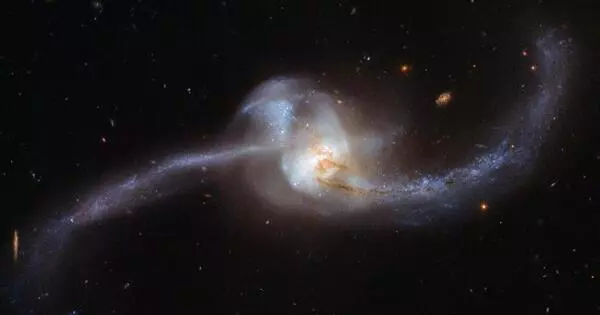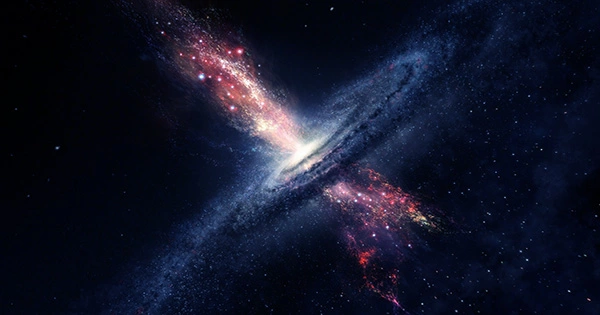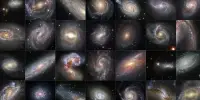Over billions of years, galaxies develop and evolve by absorbing close companions and merging with other galaxies. A new image taken with the US Department of Energy’s (DOE) Dark Energy Camera (DECam) mounted on the National Science Foundation’s (NSF) Victor M. Blanco 4-meter Telescope at Cerro Tololo Inter-American Observatory (CTIO), a Program of NSF’s NOIRLab, shows the early stages of this galactic growth process.
NGC 1532, also known as Haley’s Coronet, is a large barred spiral galaxy located about 55 million light-years away in the direction of the southern constellation Eridanus (the river). From Earth, its sweeping spiral arms are viewed edge-on, with the closer arm sinking below and the distant arm lurching upward as it tugs on its smaller, dwarf partner galaxy NGC 1531. As NGC 1532 entirely absorbs its smaller companion, these gravitationally connected galaxies will eventually merge into one.
Despite its diminutive size, the dwarf galaxy has had a significant gravitational influence on its larger companion, warping one of its spiral arms, which can be seen rising above the galactic plane. Furthermore, plumes of gas and dust may be detected between the two galaxies, resembling a bridge of star matter held together by competing tidal forces. Both galaxies have experienced bursts of star production as a result of this contact.

This asymmetrical cosmic tug-of-war depicts how big galaxies expand and evolve by devouring smaller galaxies and swallowing their stars and star-forming material. A comparable event occurred in the Milky Way at least six times in the past, leaving massive streams of stars and other evidence in the Milky Way’s halo.
The process of absorbing a smaller companion galaxy is vastly different from the cataclysmic merger of two comparable-sized spiral galaxies. In the latter situation, two enormous galaxies collide to generate a new galaxy with its own shape and properties. The Milky Way will undergo a similar galactic merger when it unites with the Andromeda Galaxy four billion years from today.
DECam provides astronomers with very detailed images of these large-scale galactic interactions due to its unrivaled wide-field imaging capabilities. It also has the amazing sensitivity required to detect faint objects in our solar system and trace the influence of dark matter on galaxies across the visible universe, thanks to the 4-meter Blanco telescope. DECam is currently used in a variety of science programs.
















